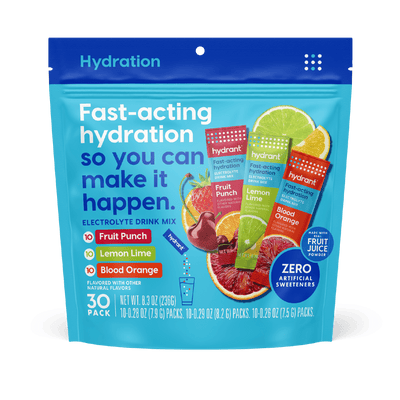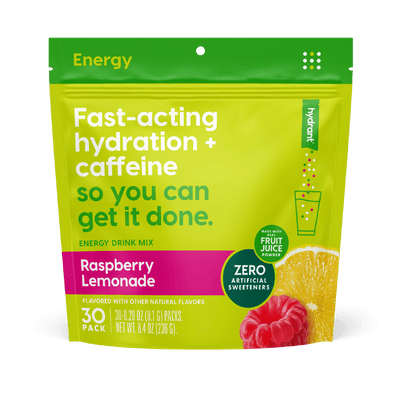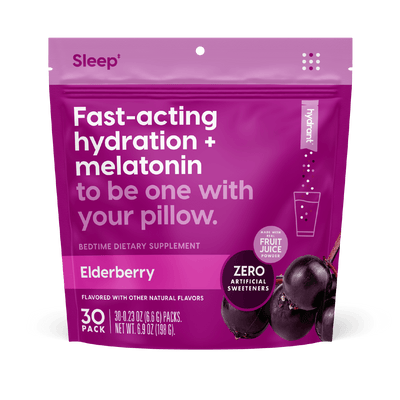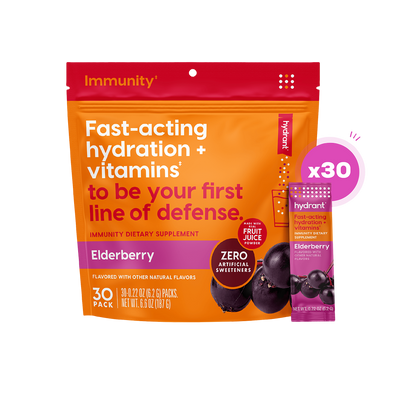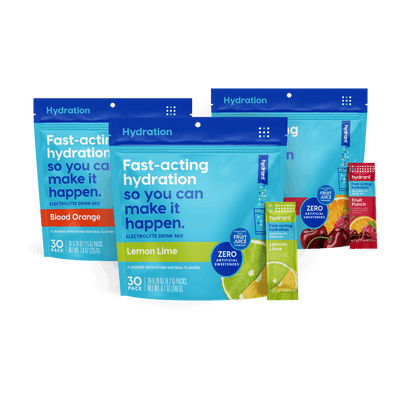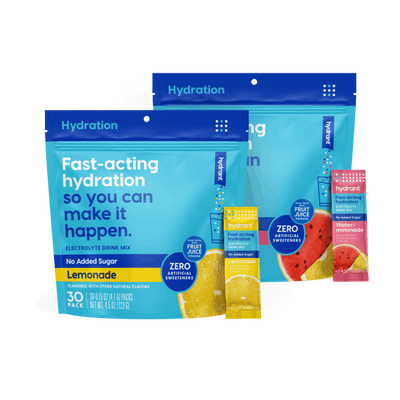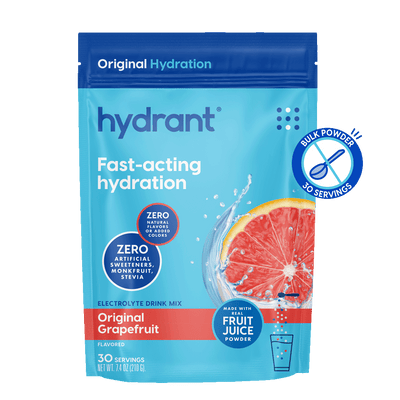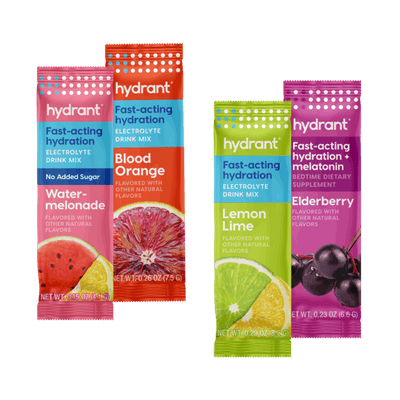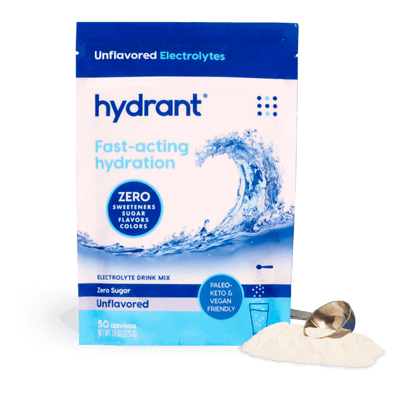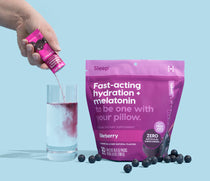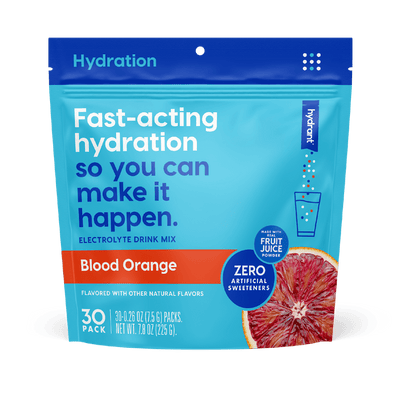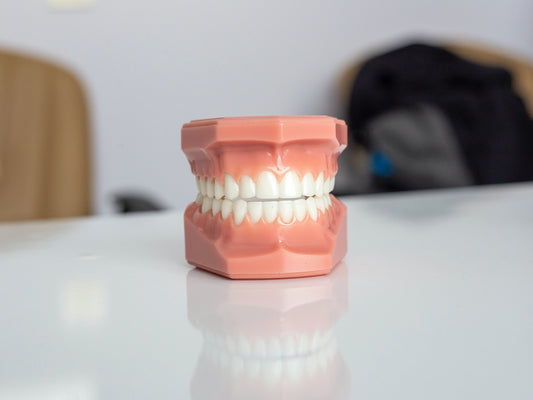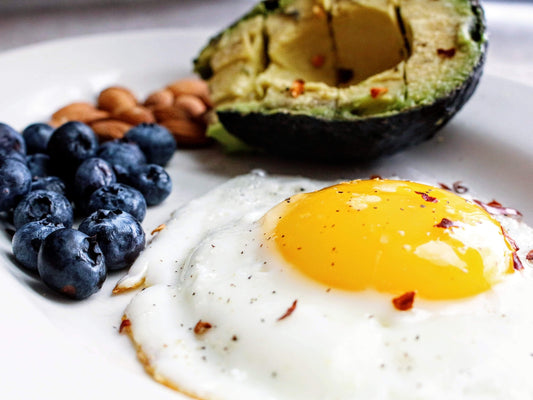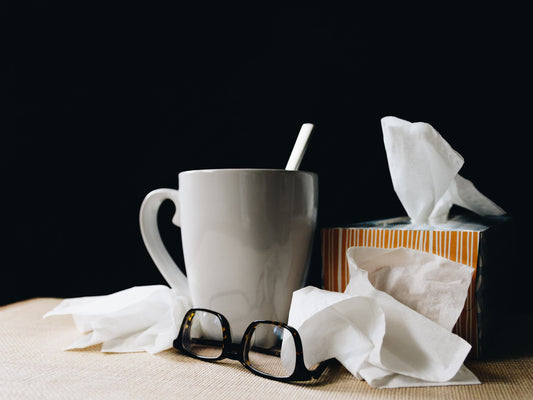When's the last time you've felt grateful for sweat?
Yes, that says grateful.
If you're like most people, you probably only think about sweat when you're wishing you had less of it. Maybe you find sweating uncomfortable or worry about developing embarrassing sweat stains on your clothes.
The truth is, sweating is a natural, normal, and necessary bodily function. Sweating keeps our body temperature regulated and even helps us attract romantic partners. [1] Humans are almost constantly sweating at least a little bit. Sweat also plays a major role in how hydrated (or dehydrated) our bodies are at any given moment.
But before we get into sweat's role in hydration, let's start with the basics. What is sweat, anyway? And where does it come from?
What Is Sweat?

Human sweat, also called perspiration, is a clear liquid secreted from the skin and hair follicles. Sweat mostly consists of water and sodium chloride (NaCL). [2] Sodium chloride is the primary chemical in salt, and its presence is the reason sweat tastes salty.
Human sweat often also contains small amounts of other minerals, such as potassium, calcium, magnesium, iron, zinc, and copper. Micronutrients and other materials also show up in sweat depending on what a person has recently consumed. [1]
If you've recently had a few cocktails, a researcher might find ethanol (alcohol) in your sweat. If you've recently indulged in chocolate cake, your sweat will likely contain glucose (sugar). Fats, proteins, and electrolytes are also present in sweat.
In addition to cooling the body, sweat also helps remove toxins. As a result, our sweat sometimes contains heavy metals and pollutants.
Researchers have been studying the chemical composition of sweat for many years, trying to identify what's "normal". The reality is, the composition of sweat varies from person to person and over time. Still, sweat might be used to diagnose illnesses someday, once experts know more about it. [3] Who wouldn't rather have a doctor swab some sweat for testing than draw blood?
Where Does Sweat Come From?
Sweat is created by sweat glands. As mammals, we humans have millions of sweat glands throughout our bodies. More specifically, we have three types of sweat glands [1]:
- Eccrine
- Apocrine
- Apoeccrine
Eccrine sweat glands open directly onto the skin. These are the most common types of sweat glands, and they're found throughout our bodies. They become active around age two.
Eccrine sweat glands primarily release sweat when our bodies become warm, but they are also active when we feel stress or excitement.
Have you ever experienced clammy palms before public speaking or when arriving at an event you feel nervous about? You can thank your eccrine sweat glands.
Apocrine sweat glands open to hair follicles, and those hair follicles then open onto the skin. Human apocrine glands don't develop until puberty. These glands are concentrated in our hairier areas, such as the scalp, groin, and armpits.
Apocrine sweat is the source of body odor and the reason people wear deodorant. It contains pheromones and can play a role in sexual attraction.
Apoeccrine sweat glands are the sweat glands scientists know the least about. They share characteristics with both eccrine and apocrine sweat glands and develop during adolescence. [4]
Apoeccrine sweat glands are mainly located in the armpit region. These sweat glands most likely exist to regulate body temperature.
How Much Does a Person Sweat on Average?

There's no single number that defines what's average when it comes to daily sweating. Like sweat composition, sweat volume varies from person to person and within the same person over time.
That said, researchers study sweat loss and can measure a person's sweat output.[5] At the upper end, people in hot climates engaging in exercise have been documented sweating up to 10 liters per day. [6] Most people likely sweat much less than this, however.
Many factors come together to determine how much any individual person sweats. How much you sweat is influenced by your:
- Gender [6, 7]
- Height, weight, and body surface area [8]
- Metabolic rate [6]
- Exercise engagement [6]
- Fitness level [6, 7]
- Weather [6]
- Acclimation to weather [6]
- Clothing [1]
- Altitude [1]
You might find yourself wondering if the amount you sweat is excessive or normal. Excessive sweating is called hyperhidrosis. [9] It can be a sign of health issues, including diabetes and thyroid problems.
According to Mayo Clinic, you should talk to a doctor if your sweating interferes with your daily life, causes you distress, has recently increased to much more than usual, or occurs during the night for no clear reason.
How Does Body Temperature Affect Sweating?
To put it simply, the hotter you become, the more you sweat. That increase in heat can come from the temperature of the environment you're in, or from your own movement.
There isn't a simple equation that says for each percentage of body temperature increase, an individual will release a certain amount of sweat, however. That's because body temperature is only one of many factors that influence how much a person sweats.
For example, how acclimated a body is to both exercise and hot weather impacts sweat volume. [6] People who exercise more often tend to sweat more due to a higher metabolic rate. People who are acclimated to a hot climate also tend to sweat more.
Does Humidity Affect Sweat and Hydration?
Humidity also affects how much you sweat and how hydrated you are. Humidity plays a role because sweating alone doesn't cool our bodies. Our sweat must evaporate to adequately cool us. When we're in a humid space, our sweat doesn't evaporate as quickly. That means we stay hotter longer and, as a result, sweat more and become less hydrated.
Humidity is also the reason the "feels like" temperature and heat index given by the weather service can differ from the actual temperature. [10] The amount of humidity in the air impacts how hot we feel because of how it affects our evaporating sweat.
How Much Should I Drink to Stay Hydrated?

Sweating majorly affects hydration. If you don't drink enough liquid to replace the fluids you lose through sweat, you will become dehydrated. Dehydration can cause serious health issues. [11] Signs of dehydration include dizziness, fatigue, excessive thirst, headaches, exhaustion, darker urine, and sometimes fainting.
Of course, the amount a person sweats varies greatly from person to person, so how much a person should drink also varies. Instead of following a rule about how many ounces you should drink each day, pay attention to your body and replenish according to your own unique needs. Anything that causes you to sweat more should prompt you to drink fluids. For example, whenever you exercise or go outside in warm or humid weather, you should drink more in order to stay hydrated.
How can Hydrant, an Electrolyte Drink, Help?
Water alone may not be enough to replace fluids, minerals, and electrolytes lost from sweating. To be properly hydrated, your body needs a blend of balanced electrolytes to help your cells rehydrate. You can find all of that in Hydrant. With four core electrolytes—sodium, potassium, magnesium, and zinc, as well as just enough sugar to speed up the absorption process, Hydrant can help you recover the minerals lost via sweat faster than water alone.
Replacing electrolytes lost through sweat is especially important when you're likely losing them more quickly than normal. For example, a person who isn't acclimated to heat loses more sodium through their sweat when they experience high temperatures than a person who is acclimated to heat. [12] These electrolytes must be replaced, or the person runs the risk of being dehydrated.
If you're starting or continuing an exercise routine or you're experiencing warmer weather, an electrolyte drink like Hydrant can be especially helpful in keeping your body balanced.
Takeaway
Sweating is a natural process, and nothing to be ashamed of. Always remember to replenish whatever you sweat out, to keep yourself on a path for staying healthy and hydrated.
